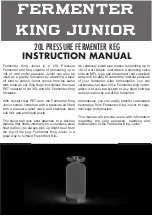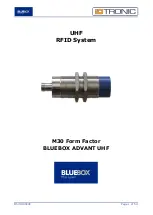
Counter/Posi2 5V, Counter 2 5V
Kendrion Kuhnke Automation GmbH
212
17 May 2021
Function
Module Counter2 features 2 identical channels.
Every channel features ports for 1 incremental encoder, 4 digital
inputs and 1 digital output.
Module Counter/Posi2 also has an extra analogue output.
The variables are put into groups.
1. To control and monitor the entire module:
Module Control/Module State
2. To control and monitor counter 1 or 2:
Options/Control/State/Error
3. Readings of counter 1 or 2:
Set-points/Actual Values
4. State of the digital IOs of counter 1 or 2:
Digital Outputs/Digital Inputs/Time Stamp of Input
Edge/Output Delay
5. State of the analogue outputs of counter 1 or 2:
Optional Analogue Outputs (function provided by module
Counter/Posi2 only)
Control and State principle:
When a control bit turns (=TRUE), the rising edge makes the module run the associated function.
To indicate that the function is running, the module changes the associated status bit (=TRUE). When the
control bit becomes (=FALSE) again, the module also resets the status bit to (=FALSE).
Information
The text below describes the function of Counter/Posi 1. The information applies to Counter/Posi
2 also.
Operation Synchronised with Frames or DC
The module runs in the appropriate mode, depending on whether Distributed Clocks (DC) is used or not.
By default, the module synchronises with frames. When the first DC frame is received, the module
synchronises with DC mode and stays in this mode until it is switched off the next time.
Synchronised with Frames
The EtherCAT master sends EtherCAT frames containing the output data for the module. The module
imports and processes the output data whenever it receives any of these frames. In return, the module
exports its input data to the EtherCAT frame and sends the frame to the master.
Synchronised with DC
A module synchronised with DC will automatically generate DC interrupts according to the Distributed Clocks
rules.
The EtherCAT master again sends EtherCAT frames containing the output data for the module. Whereas the
module will again import the output data contained in that frame, it will not process the data until it
encounters a DC interrupt. The module uses the DC interrupt to export its input data to a buffer from where it
is picked up by the next EtherCAT frame sent to the master.
This method allows you to synchronise the times of the digital inputs and digital outputs of several modules
in the same EtherCAT network.
Refer to page 217 and following, Counter 1 -















































